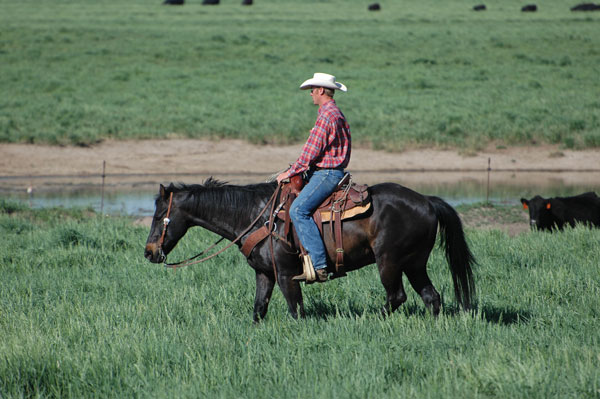Sustainability has become a consumer buzzword. But it’s really nothing more than doing what ranchers have always done.
December 8, 2017

By Sara Place
You’ve heard it before – we have a growing world population that will reach over 9 billion by 2050, but we don’t have an ever-expanding amount of land. As a result, we need to do more with less. This core issue is at the heart of current concerns about “sustainability,” but sustainability is nothing new in American agriculture.
In November 1909, Henry P. Armsby, a father of modern animal nutrition and member of the National Academies of Sciences, delivered an address in Chicago as the president of the newly formed “American Society of Animal Nutrition,” the current American Society of Animal Science. Armsby began his address outlining the prevailing predictions of a growing human population, stating “…it would be foolish in the extreme to close our eyes to the fact that the intensity of the demand for food by our future population will exceed anything we have yet known.” Sounds familiar, right?
What was the state of American agriculture in 1909? We had 90.5 million Americans to feed, 60.8 million cattle, and produced 6.9 billion pounds of commercial beef. Fast forward to 2016. There were 323 million Americans, 91.9 million cattle, and we produced 25.2 billion pounds of commercial beef.
Put another way, if we produced the same 25.2 billion pounds of beef today with 1909 efficiency, we’d need 221.7 million cattle in the U.S – 141% more cattle than we have today.
For corn, one of the key feedstuffs in the cattle industry, the situation is even more dramatic – with 1909 efficiency we’d need 581.3 million acres of harvested corn grain if we were to produce the same amount we do today. That’s more acres than all the cropland and pastureland combined in the United States today. The productivity gains U.S. agriculture has made likely far exceed anything Armsby could have imagined.
If agriculture, and beef specifically, has made such impressive productivity gains and corresponding improvements in environmental sustainability, why is the prevailing media narrative that current agricultural practices are unsustainable and beef is the worst? Like many controversial issues, there are some nuggets of truth in the critiques of modern beef production, but they’re wrapped up in a whole lot of misinformation.
Take, for example, one of the most common critiques of beef, it’s carbon footprint. Beef’s carbon footprint does tend to be higher than other foods – multiple research studies including the beef checkoff-funded industry life cycle assessment confirm this.
But relative differences in carbon footprints between foods don’t translate into big differences at the national level, especially considering beef production is responsible for only 2% of U.S. (and 0.26% of the world’s) greenhouse gas emissions, according to the EPA. Globally, the U.S. produces 19% of the world’s beef, with 9% of the world’s cattle.
A recent study concluded that even if every American went vegan, we’d only reduce our nation’s greenhouse gas emissions by 2.6%. This most extreme case was simulated by the researchers to find out the absolute maximum costs and benefits to eliminating animals from U.S. agriculture, even though this is an unrealistic scenario.
By the way, we wouldn’t be able to produce enough essential micronutrients to meet every American’s needs without animal agriculture. So if someone chose to go meat or beef-free once a week based on the above information, it would have little effect on greenhouse emissions.
We know sustainability does not tend to be a top reason for food purchases, but consistent negative headlines about beef’s sustainability impacts do pose a risk to beef’s reputation. We need to aggressively counter misinformation that can color consumers’ perception of beef.
This is why the beef checkoff has conducted research to benchmark the beef community’s sustainability, created fact sheets, infographics, and videos to communicate the facts and beef farmers’ and ranchers’ commitment to doing the right thing, and worked to get the truth out in the mainstream media about beef’s sustainability.
So, what is beef sustainability? It’s producing safe, nutritious beef while maintaining economic viability, environmental stewardship and social responsibility. In other words, it’s taking care of the land, the animals, being a good neighbor, and making money while you do it.
It’s not one-size-fits-all, as every producer is dealing with a different climate, natural resources, financial resources, and so on. It’s about leaving your land in better shape than you found it and passing on your legacy to the next generation, whether they are family relatives or not. Probably sounds like what you’re already doing.
Place is senior director, sustainable beef production research, at NCBA, a contractor to the Beef Checkoff Program. She was previously assistant professor in the Department of Animal Science at Oklahoma State University.
You May Also Like



